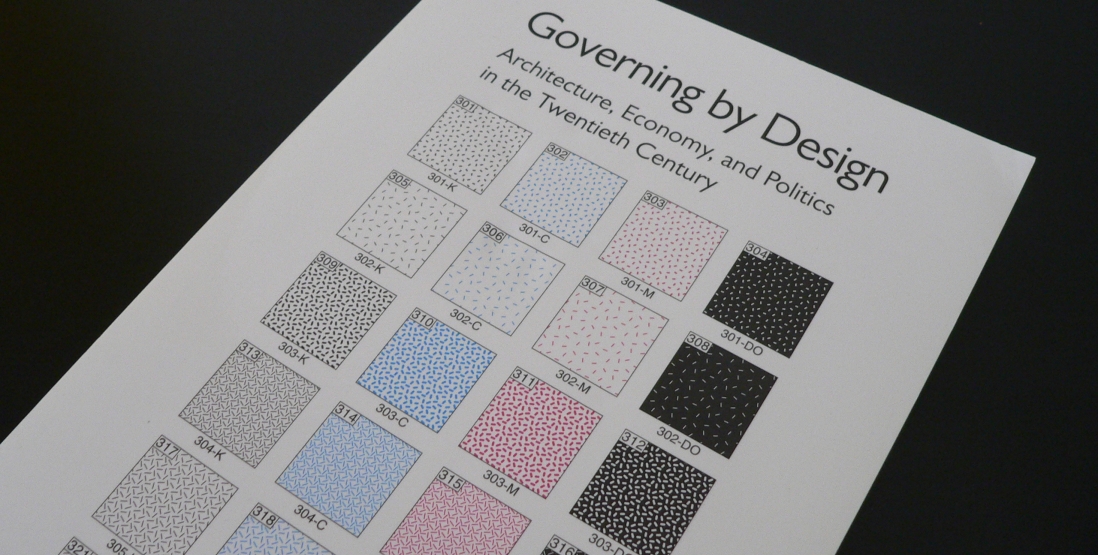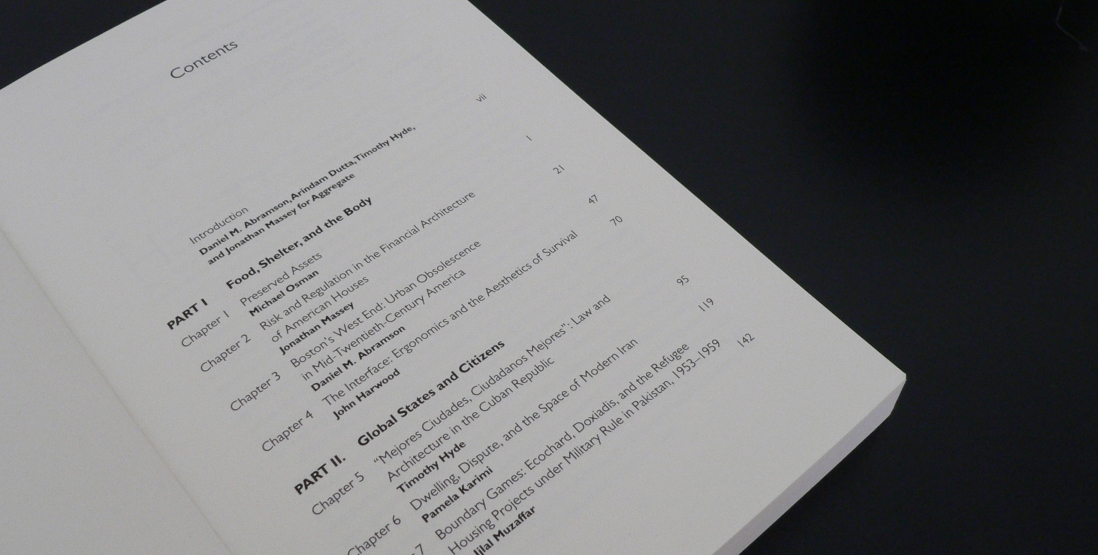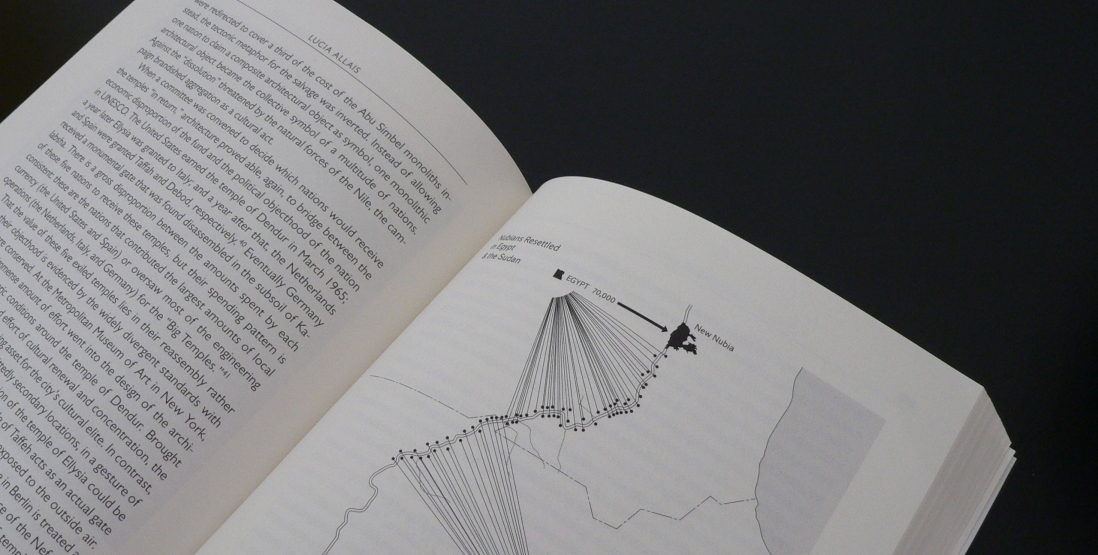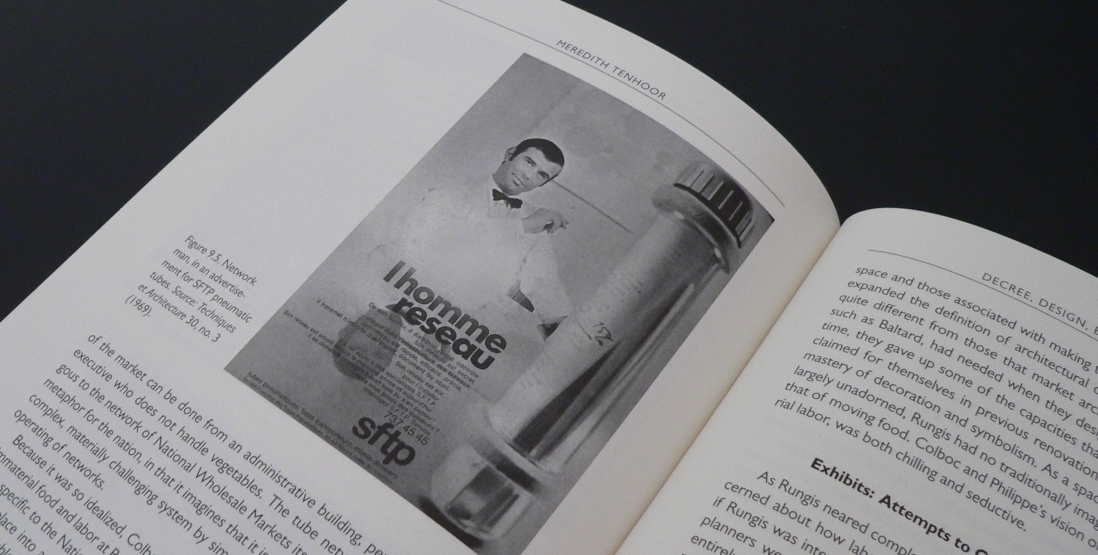Governing by Design
Governing by Design: Architecture, Economy, and Politics in the Twentieth Century
Published April 2012 by the University of Pittsburgh Press
info • buy
How does change happen? This question underlies the chapters collected in Governing by Design. From this basic query arise new accounts of the twentieth-century built environment that pursue a set of corollary questions: Who authors design? How does architecture participate in modernization? How does architecture govern?
Governing by design, this book suggests, is not simply a matter of monumental symbolism and space, state power and authority, imposed control and surveillance. This book instead sets architecture in relation to mundane matters: food, bodies, housing, markets, cities, and culture. How do we regulate basic aspects of our lives through design, such as the consumption of food and shelter? How do we manage the risks of modernization to our bodies and environments? How is culture produced by politics, planning, and architecture? How are we fashioned as citizens by our homes, cities, and heritage? Examining how issues of risk, regulation, consumption, and citizenship have played themselves out in architectural practices and projects from the 1880s up to the present in the Americas, Africa, Europe, and Asia, these chapters may help change the way we look at architecture and its history globally.
What links this book’s contributions together is the idea of architecture governing conduct—mediating power—through networks and norms, frames of action and possibility that flow through all scales from the body to the home to the city to the globe, at the hands of not just the state but also individuals and institutions. The chapters are linked, in other words, by an engagement with “governmentality,” the concept that the philosopher Michel Foucault developed to describe the combination of protocols, rules, structures, and institutions through which our desire to be governed is cultivated and channeled. Rather than frame governance only through the activities of the state, these texts frame an array of mechanisms that mediate power to regulate our conduct, encompassing everyday practices and mind-sets along with administrative protocols and organizational procedures.
To reconstruct the ways architecture has participated in modern governmentality, the chapters in this book explore complex concepts of authorship and agency, focus on events and the contingency that characterizes them, and attend to the diverse projects and practices through which architecture has contributed to the formation of liberal power. Rather than affirming the continuity from architect’s intention to realization in the completed building, or confirming master narratives of progress or conflict, they emphasize the degree to which intention and outcome are separated by accidental confluences, redirected intentions, and unforeseen outcomes. By showing us the historical construction—the design—of such basic architectures as food, home, culture, and the body, not to mention the broader built environment, Governing by Design points to the fundamental contingency not only of history but also of the present and future.
Contents
Introduction • Daniel M. Abramson, Arindam Dutta, Timothy Hyde, and Jonathan Massey for Aggregate
Part I: Food, Shelter, and the Body
Chapter 1 • Preserved Assets • Michael Osman
Chapter 2 • Risk and Regulation in the Financial Architecture of American Houses • Jonathan Massey
Chapter 3 • Boston’s West End: Urban Obsolescence in Mid-Twentieth-Century America • Daniel M. Abramson
Chapter 4 • The Interface: Ergonomics and the Aesthetics of Survival • John Harwood
Part II: Global States and Citizens
Chapter 5 • “Mejores Ciudades, Ciudadanos Mejores”: Law and Architecture in the Cuban Republic • Timothy Hyde
Chapter 6 • Dwelling, Dispute, and the Space of Modern Iran • Pamela Karimi
Chapter 7 • Boundary Games: Ecochard, Doxiadis, and the Refugee Housing Projects under Military Rule in Pakistan, 1953–1959 • M. Ijlal Muzaffar
Part III: Engineering and Culture
Chapter 8 • The Design of the Nubian Desert: Monuments, Mobility, and the Space of Global Culture • Lucia Allais
Chapter 9 • Decree, Design, Exhibit, Consume: Making Modern Markets in France, 1953–1979 • Meredith TenHoor
Chapter 10 • Marginality and Metaengineering: Keynes and Arup • Arindam Dutta





